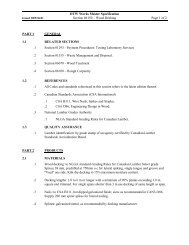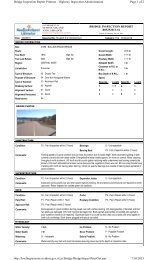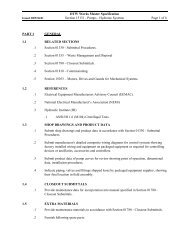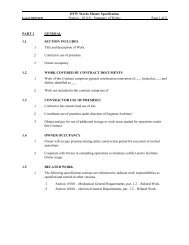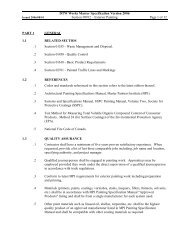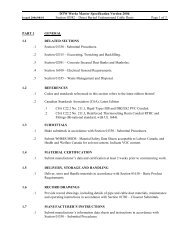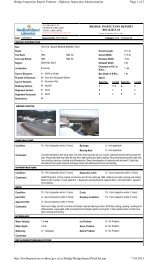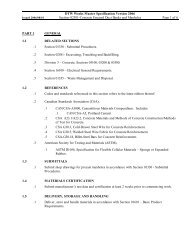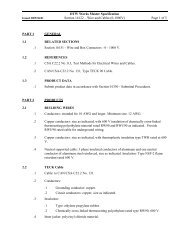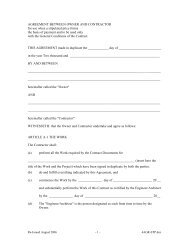EMCS: Site Requirements, Applications and Systems Sequences of ...
EMCS: Site Requirements, Applications and Systems Sequences of ...
EMCS: Site Requirements, Applications and Systems Sequences of ...
Create successful ePaper yourself
Turn your PDF publications into a flip-book with our unique Google optimized e-Paper software.
DTW Works Master SpecificationSection 13846 <strong>EMCS</strong>: <strong>Site</strong> <strong>Requirements</strong>, <strong>Applications</strong>Issued 2005/06/01 <strong>and</strong> <strong>Systems</strong> <strong>Sequences</strong> <strong>of</strong> Operation Page 5 <strong>of</strong> 19CDRHPSLPSDCWDHWDHWRSANPSTMPSPRDSPRWFSTPVBACondensate return systemSteam High pressure systemSteam Low pressure systemDomestic cold water systemDomestic hot water systemDomestic hot water system RecirculationSanitary sewage pumped systemStorm water pumped systemSprinkler Dry pipe systemSprinkler Wet pipe systemFire st<strong>and</strong>pipe & hose systemVolume Box Control Assembly1.3 I/O SUMMARY SCHEDULES.1 General:.1 The <strong>EMCS</strong> contractor shall provide a complete I/O summary schedule similar tothe one listed below, listing <strong>and</strong> describing all I/O’s in detail. Contractor’sst<strong>and</strong>ard schedule may be used provided all relevant information is provided..2 PCU no: identifies the PCU to which all points in the I/O Summary Schedule arewired..3 Building/Area: unique label given to each building forming part <strong>of</strong> a multibuildingfacility..4 Area/System Label: unique label given to each area <strong>of</strong> the building or to eachsystem..1 Column 1: Point no: I/O Summary Schedule reference number..2 Column 2: Point label: unique label for each point in the system. Pointlabels may be repeated for other buildings or systems..3 Column 3: Description: describes the point label in exp<strong>and</strong>ed terms..4 Column 4: Type: (eg. AI, AO, DI, DO)..5 Column 5: Eng. Units: Describes the engineering units used (eg. for AI,AO: C, kPa, Amp Volt. For DI, DO: OFF, ON)..6 Column 6: Access level: Defines the level <strong>of</strong> access for varyingcomplexity <strong>of</strong> functions. Usually associated with password feature.Usually assigned value between 0 (lowest) <strong>and</strong> 4 (highest)..7 Column 7: Sensor type: describes in 2 or 3words..8 Column 8: Assoc. Point: Identifies/ describes points for purposes <strong>of</strong> alarmsuppression, s<strong>of</strong>tware interlocks..9 Column 9: Type: defines the type <strong>of</strong> alarm (eg. CR = CRITICAL, CA =CAUTIONARY, M = MAINTENANCE).



